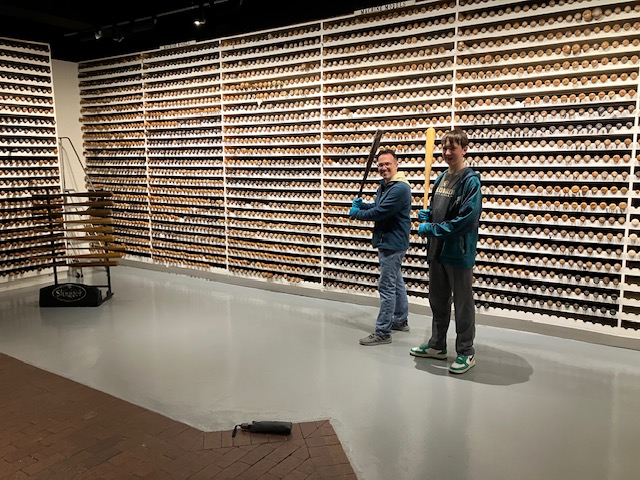
It was an eventful year to be a University of Colorado football fan. The arrival of Coach Deion Sanders and the job he did to resurrect a program that needed more than a jolt was the definition of game-changing, both on and off the field. While the team’s 4-8 record didn’t ultimately live up to the hype, there’s no doubting the impact Sanders had on the team, the program, its relevance, its coffers and the entire culture in Boulder.
As a fan and an alum, I was hoping this past season would be special. So when the Louisville Sports Commission in Kentucky put out its preseason watchlist for its annual Paul Hornung Award — given to the most versatile player in college football — I had high hopes that Sanders’ vision might yield a winner for two-way phenom Travis Hunter, who made the list. In fact, I sent Louisville Sports Commission President and CEO Greg Fante an email within minutes of getting the watchlist press release with the message that “When Travis Hunter wins, I’ll want to be front row.” Of course, this was before the team’s first game, let alone the first three games the Buffs won to send their stature into the atmosphere. At the time that watchlist came out, it was all wishful thinking and blind fandom to think that a CU player would come out on top.
Nonetheless, in the case of Hunter, it appeared from Game 1 that he was the real deal and very likely the most deserving — and certainly the most versatile — athlete in college football. In the end, he averaged 119 total snaps per game as a cornerback on defense and wide receiver on offense — the equivalent of playing two full games every week. And he excelled, recording three interceptions, 31 tackles, 57 receptions and five touchdowns, among other remarkable stats.
So when Hunter was named the Hornung winner at season’s end, it was time to deliver on the promise of going the Louisville to experience one of the biggest nights of the year for that city’s sports commission. And as luck would have it, my son, Jonas — who turned 14 days before the banquet — had that day off from school where we live in Colorado, making it possible for him to join me on the trip.
In the end, our experience was everything sports-related travel is supposed to be for an award that is also everything that sports tourism organizations should aspire to produce.
Sponsored Content
The Joys of Sports-Related Travel
Many of us in the industry have children who, depending on their interest in sports, may think we have one of the most interesting jobs in one of the most exciting industries, which is indeed the case. In the case of Jonas, his awareness or interest in what I do has started to develop relatively recently. He’s a reasonably devoted sports fan who is developing his own allegiances (a passion that’s quite sincere for the Philadelphia Eagles, for example) and a growing interest in attending live events. But there haven’t been too many opportunities to involve him in much of my business-related travel. After the pandemic, we famously took a great trip to Tennessee to see Dude Perfect perform at the Bristol Motor Speedway, a trip that was entirely for fun but started to expose him to the joys of travel to events.
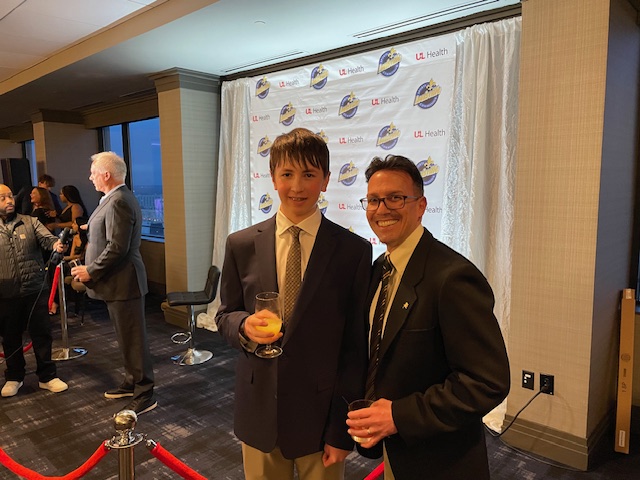
For this trip, since it was a product of my beloved university being recognized, it was a bit personal as well. But there was a genuine business purpose in experiencing the Hornung Award in person having heard about it for years from the team in Louisville.
When the fates aligned to bring my son along, it made the trip even more special than it would have been otherwise. For his first trip to the city, we made sure to pack in as much as we could and were able to do that thanks to the generosity of the sports commission and its many connections in town.
The Slugger and the Champ
Our first stop was a private tour at the Louisville Slugger Museum and Factory, a venue I’d driven by on several trips to Louisville (you can’t miss that giant bat out front) but never had the chance to explore. Jonas and I got to go behind the scenes to see how the company that has produced professional baseball bats since 1884 still makes it happen. As a big baseball fan growing up (and still) I had never put much thought to what goes into producing a bat. But I will never look at bats the same way again.
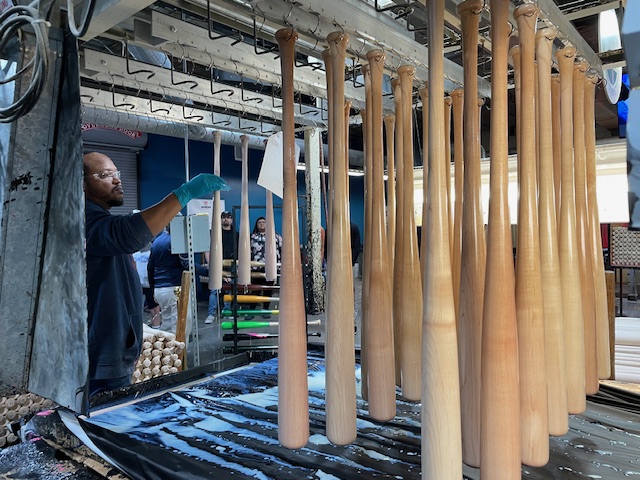
Among other highlights, we got to visit the company’s bat vault, where the templates for every professional player’s bats are preserved for history. Once players settle on the bat specs they want (wood type, grip width, barrel width, overall length and weight…), the company preserves that data to produce bats for the players when they need them, or to keep a historical record of what they swung once they retire. When a member of the public asks about at a player, the museum team can look it up, go to the vault shelf and produce that player’s exact model to hold. And in the more public-facing portion of the museum, you can hold and swing an actual game-played bat from among several dozen players. Jonas chose to swing a Hank Aaron; I enjoyed holding a Darryl Strawberry slugger.
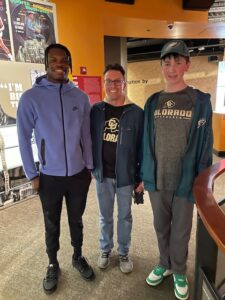
After our tour, we headed over to the city’s other quintessential downtown sports venue — the Muhammad Ali Center, named for the boxing champion and international icon who was a Louisville native. There, as an added treat, we got a tour along with Hunter and his family, Kenny Mayne (the former ESPN broadcaster who served as a keynote at the Hornung Award dinner) and CU cornerbacks coach Kevin Mathis, who as a former Dallas Cowboys star gave Jonas some playful sideways looks at his Eagles hat and sweatshirt. Hunter himself was generous with his time, even posing for a photo with us that served as yet another reminder that Jonas is now somehow just a hair under 6 feet tall, and catching up to the 6’1” Hunter any day now.
Ali was, of course, a legend, and his center in Louisville does justice to his local and international stature. There, you can learn about the man outside the ring and the endless contributions he made on social issues and justice. It’s hard not to walk away inspired, especially touring with an athlete in Hunter who will no doubt have his opportunities to inspire the next generation on and off the field as well.
A highlight of the tour was a trip to the archives, where the team pulled out just a few of the thousands of items housed there. Those items included an Ali warm-up robe with his original Cassius Clay name, a ’70s-era piece of warmup retail equipment called a Rope-a-Dope that was supposed to give you Ali-like muscles (but was nothing more than a round piece of plastic), and items that used the champ’s name legally (kids’ dolls) or illegally (pancake syrup that was supposed to pour like a champ).
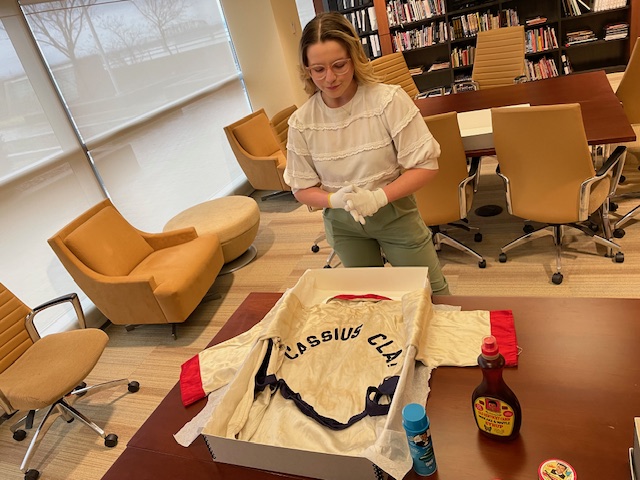
The Most Versatile Player
But of course, the main event for us was the Hornung Award banquet. A word on Paul Hornung for those who don’t know the name. A Louisville native, he won the 1956 Heisman Trophy and is enshrined in the College and Pro Football Halls of Fame after a standout career with the Green Bay Packers. There, Coach Vince Lombardi called him “the most versatile man ever to play the game.”
The Louisville Sports Commission created the Hornung Award in 2010 to honor the local legend and recognize the previous season’s most versatile college football player. And the commission’s selection committee of sports journalists and former NFL stars (and one fan vote sponsored by Texas Roadhouse) has certainly picked some winners since then. In 14 years, seven of its winners have become first-round draft picks and all have played in the NFL. Many continued to be stars, including DaVonta Smith (2020), Saquon Barkley (2017), Christian McCaffery (2015) and Odell Beckham Jr. (2013).
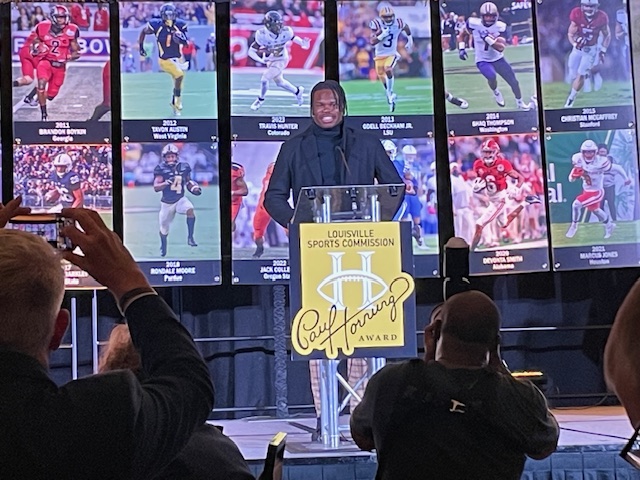
While I had promised to be in the front row for the ceremony, we were delighted to sit in the row behind Hunter and his family, joined by the leadership of Louisville Tourism and the sports commission. (Having Louisville Tourism President and CEO Cleo Battle as a fellow CU devotee made the evening even sweeter.) As a dad, it was fun to have my son there as well for a VIP reception and the banquet itself. The event required him, however, to get some new clothes, most of which included buttons, which is certainly not his everyday wear. With a new sports coat in hand, new pants, a tie and the wearing of an actual belt, it was dress-up day for sure. But he looked great and it was a proud dad moment watching him mingle in a respectful and professional way with people he had never met before.
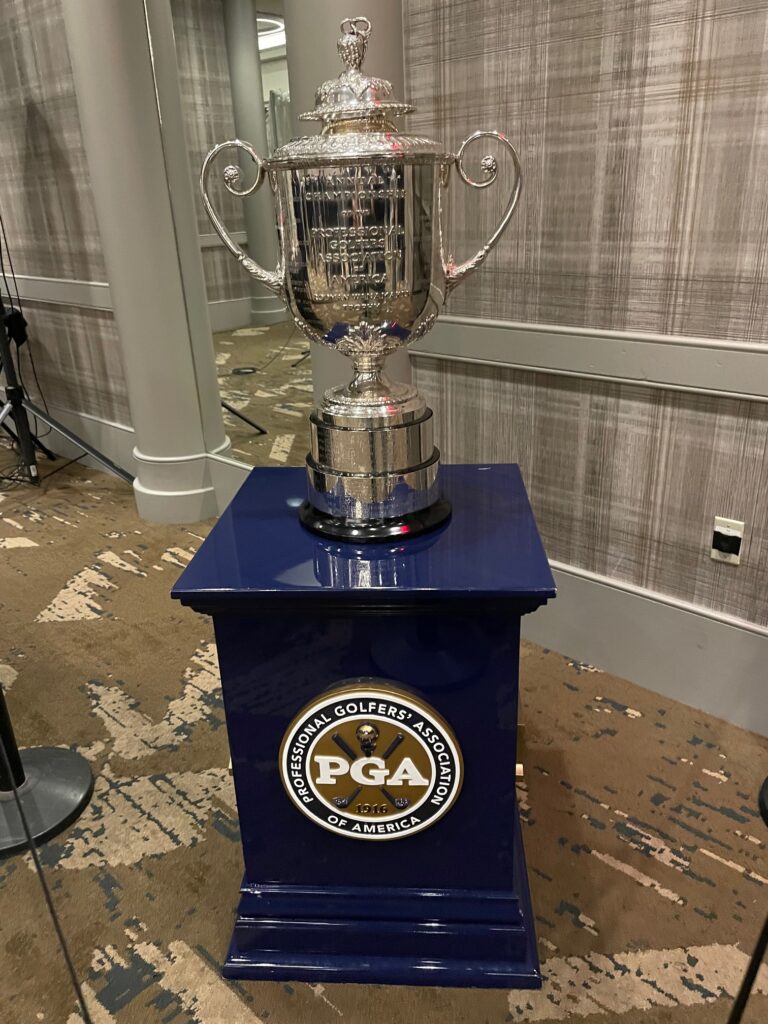
The banquet was first-class and a template for sports commissions looking to prove their importance and relevance to their own communities. While it serves as a fundraiser for the sports commission, it has much greater value than that. The invite for local youth football players to be in Hunter’s presence was a great touch. The sports commission also highlighted other big events, displaying the Wanamaker Trophy as Valhalla Golf Course will host the PGA Championship this year.
With 300 people in the room, leaders of the sports commission and their key local sponsors and partners hammered home the role sports play in their community, the national significance a program like the Hornung Award provides and the important role sports tourism organizations play in economic development. Kenny Mayne was a terrific keynote speaker, making a gracious toast to his former colleague ESPN Chris Mortensen (who passed away a week before the ceremony) and highlighting his own path to television, which required multiple levels of perseverance. (As a CU fan, I could have done with less of his encouraging Hunter to transfer to his alma mater at UNLV, but it seemed to be in good fun. Although in the age of NIL and transfer portals, you never know when those jokes will turn into real things…)
As for Hunter, he was humble in accepting his award, appearing on stage to be as gracious and fun-loving as he appeared to us during our tour earlier in the day at the Ali Center and with the public with which he interacted. (At the end of our Ali Center tour, a man was buying admission to the center when he looked up and instantly noticed Hunter, declared himself a CU fan and found himself in a selfie with the athlete within seconds.) Those who attended the dinner were treated to a wonderful night to honor sports in the Louisville community and its impact in the city and beyond. And when Jonas went up for a final autograph of his program, Hunter stopped and capped off our time together with a signature, a smile and some final small talk that will seem much larger to both of us as he continues his career.
A Run for the Roses
The next morning, we got one last treat with a tour from Fante to Ali’s gravesite, a tasteful honoring of the boxing great in the vast Cave Hill Cemetery, which is the final resting place for many of the city’s residents and elite alike, including another local notable, KFC’s Colonel Sanders himself.

Jonas and I even managed to squeeze in one last experience later that morning, taking in a tour of Churchill Downs. It had been several years since I’d been there for our opening night at TEAMS ’18 and the first time I have taken the official tour, which offered a great history of a race that turns 150 years old in May. To say the venue is excited about that anniversary is an understatement. While we’ve watched the Derby on television in the past, I’m positive that Jonas will have a stronger interest this year now that he’s set eyes on those twin spires in person and stood right on the rail where those horses will come down the final stretch.
And just when we thought that would be the capper on the trip, another one of the perks of regular travel presented itself when out of nowhere, we were upgraded to first-class on the flight home — Jonas’ first experience up front. It may have created a monster. While we may be able to have him experience the occasional sport event or banquet if the fates align in the years to come, he may be on his own to fly first class to experience them in the future. But for one glorious afternoon, he was able to enjoy an orange juice in an actual glass, a warm meal with a warm roll, and someone to wait on his every need. It was a first-class end to a first-class weekend filled with instant memories.

What It’s All About
The bottom line on our travels was that the entire experience was made possible by a forward-thinking organization in the Louisville Sports Commission. It’s a testament to them and others like them in the space that they have found a way to use their own local love of sports to create a national profile with their Hornung Award. Their awards banquet not only reinforced their own impact on the local community by highlighting their daily work creating and supporting meaningful events. It also proves that destinations like Louisville can raise their national profile through sports — a constant and valuable reminder for destinations of all sizes.
For me, the chance to expose my son to the joys of sports-related travel with an experience he will not soon forget is equally important. After his weekend in Louisville as a first-time visitor, he’ll no doubt become an instant ambassador for a city that showed off its best. And in the end, that epitomizes the best of what sports-related travel can be.

Jason Gewirtz is vice president of the Northstar Meetings Group Sports Division and executive editor and publisher of SportsTravel.












 Copyright © 2025 by Northstar Travel Media LLC. All Rights Reserved. 301 Route 17 N, Suite 1150, Rutherford, NJ 07070 USA | Telephone: (201) 902-2000
Copyright © 2025 by Northstar Travel Media LLC. All Rights Reserved. 301 Route 17 N, Suite 1150, Rutherford, NJ 07070 USA | Telephone: (201) 902-2000